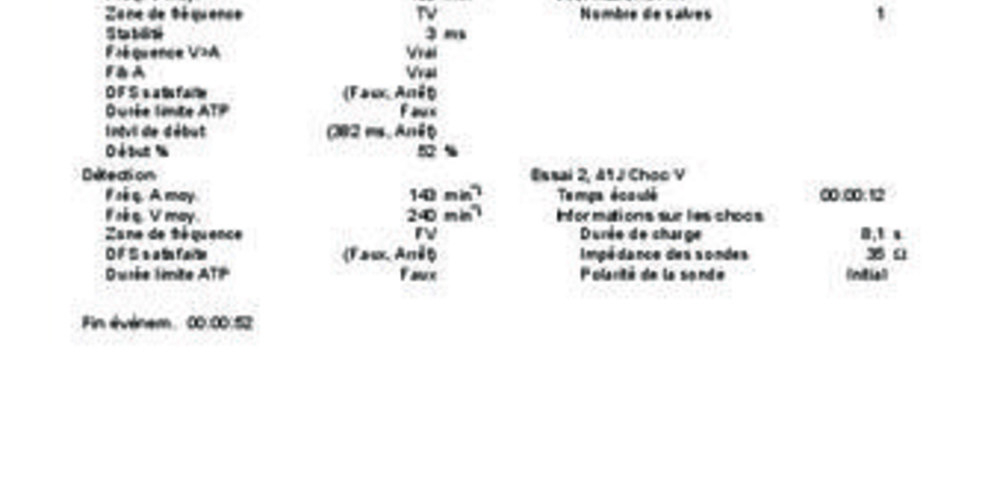VT acceleration by antitachycardia pacing followed by electrical shock
Tracing
Manufacturer Boston Scientific
Device ICD
Field Therapy
N° 9
Patient
84-year-old man presenting with ischemic cardiomyopathy underwent implantation of a Boston Science Teligen dual chamber defibrillator for secondary prevention of VT. He suffered from chronic AFib and abnormal atrioventricular conduction. He was seen for a complaint of palpitation followed by near syncope and delivery of an electrical shock.
Summary
Tachycardia detected initially in the VT zone and requiring a salvo of ATP; secondary acceleration of the VT diagnosed in the VF zone, followed by delivery of a 41-J shock.

Graph and trace
Graph and tracing
- probable atrial tachycardia and rate responsive ventricular pacing;
- sudden onset of a monomorphic and regular tachycardia;
- VT diagnosed by the device;
- first therapy in the VT zone: burst of 8 cycles with probable ventricular capture;
- acceleration of the VT to the VF zone with change in the morphology of the ventricular electrograms;
- diagnosis of VF and charge of the capacitors;
- end of the charge;
- delivery of 41-J shock;
- termination of atrial and ventricular arrhythmias.
Other articles that may be of interest to you

EGM recordings






An electrical shock might be delivered after the detection of an arrhythmia in the VT zone for 1 of the 3 following reasons: 1) the shock is the first therapy programmed in the VT zone, 2) ATP preceding the shock was unsuccessful, or 3) a salvo of ATP accelerated the VT to the VF zone, as in this example.
In some patients, ATP might be intermittently successful, with a majority of episodes terminated by ATP and a minority requiring the delivery of a shock. In rare patients, ATP is invariably unsuccessful at best and, in the worst case, accelerates the tachycardia. In such case, the characteristics of the salvos (coupling, number of stimuli) can be changed or, should it remain unsuccessful, ATP can be cancelled altogether in favor of an electrical shock delivered as first-line therapy. The strength of the first shock is then usually programmed between 5 and 10 J to limit the consumption of energy and the associated discomfort.